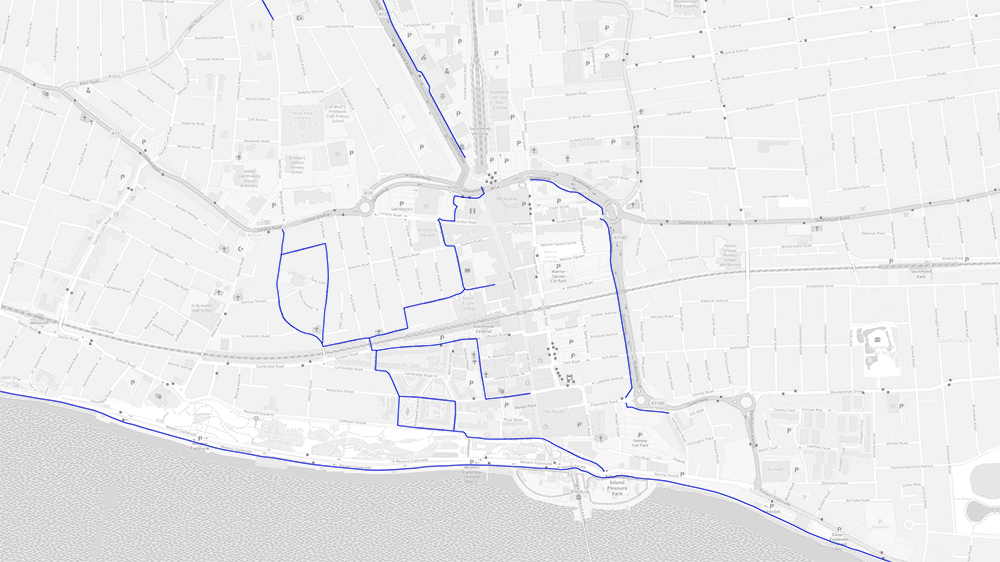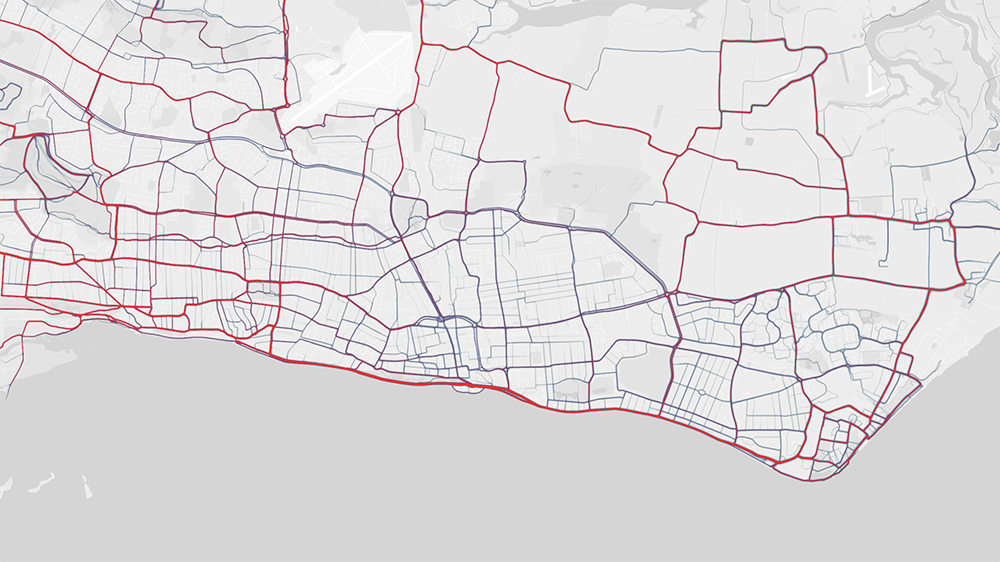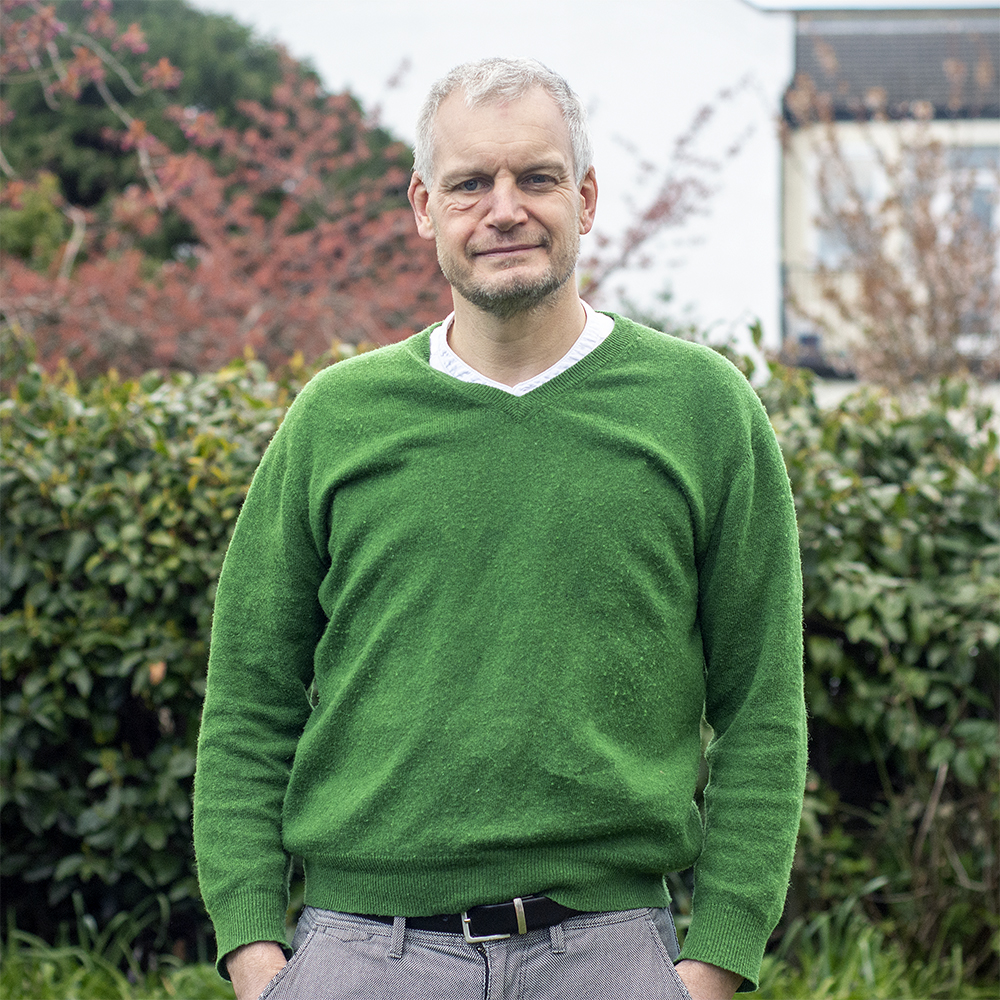The survey, which has been open for eight months, saw avid bikers and non-cyclists alike contribute to the results. The data published today paints a promising picture of many would-be cyclists, that are let down by the town’s poor cycling infrastructure.
The Results:
Whilst 43% of our respondents said their usual form of transport was their own car – when asked if their usual form of transport became temporarily unavailable, 38% of responders said that cycling would be their next preference, over walking or public transport.
Only 10% of respondents thought that the council sufficiently priorities cycling.
86% of respondents felt that bike theft is an issue of concern in Southend, and that the Police and Council are not doing enough to tackle bike theft across the town. 63% of people we asked said that they would not feel comfortable locking up their bicycle in town or at train stations, and said they would be concerned that their bike would not be safe if left unattended. A further 19% of people said they had previously been a victim of bike theft in Southend.
84.95% said they would not feel comfortable with cycling with their children or younger members of their family across Southend, with only 7.5% saying they regularly cycle to school with their children.
Feedback:
A sample of some of the comments we received in the survey are as follows:
Brian – Westborough“I’m the former chair of Just Ride Southend, and I have spent six years listening to people express their fear of the roads. Our own volunteers have nearly all been involved in accidents with poorly driven vehicles, some resulting in hospitalisation. If you are serious about encouraging cycling, make it safer and make car travel less attractive.” Jackie – Shoeburyness
“I learned to ride a bike at the grand old age of 46 and naively thought this would be welcomed as a good, citizenly thing to do. I have been horrified at the anti-cycling sentiment I have faced ever since, both on social media and the road. While out riding, I have been sworn at, had lit cigarettes thrown at me, a full can of lager chucked at me and had to endure countless unsafe manoeuvres by motorists. I believe I am a careful and considerate cyclist, and that I follow the Highway Code far more than the average motorist does. And yes, I’m insured and I do pay road fuel licence!” Barry – Chalkwell
“I’d create a more extensive, denser network of cycle routes, giving cyclists priority over other vehicles in designated residential streets that form part of the routes. Signage should make clear everywhere that cyclists have priority over other vehicles on cycle routes.” Sheilagh – West Shoebury
“I would link up all the cycle paths across the borough. I would add cycle signage to the main road signs. I would install bike racks evenly spaced along each road in the borough.” Lucy – West Shoebury
“Wider paths, clear routes, more safe bike sheds, it would be wonderful if kids could cycle to school anywhere in town and as parents, we know they are safe.” Simon – Chalkwell
“Segregated cycle lanes on or parallel and nearby to major thoroughfares. Advanced stop lines at most junctions. Dutch-style roundabouts. Road architecture that prioritises cycling. 20mph for residential streets. Low traffic neighbourhoods where cycling and walking are the more natural ways of getting about.” Hannah – West Leigh
“The cycle lanes along the seafront are good, but I wish there were cycle lanes along the London road.”
The results of the survey aren’t shocking, and the feedback from the town’s cyclists isn’t new either.
Cyclists across town have been calling for improved infrastructure for years, and the council continuously fails to deliver the new schemes it promises.
At a time of climate emergency, it is more important than ever that the council takes bold measures to decarbonise our cross-town transit – and a good place to start is with cycling.

Just looking at a map of the current cycling routes through the town centre illustrates the problem. Unconnected and illogical routes unproductive for swift travel, often leave cyclists at risk at major junctions and force many to mount the pavement for their safety.
Busy roads that are considered major transit routes for cars and buses throughout the town offer no designated road space for cyclists. Those few crossings and junctions that do offer advanced stop lines for cyclists appear and disappear with no cycle lanes to help bicycles cut through the standstill traffic. Pulling away at a red light with several buses behind you is a too-common nightmare that dissuades many parents from cycling on the roads with their children.
A chronic issue throughout the town’s road design is that for the last 70 years town planning has assumed car travel is the default for every resident. We’re left with congested roads that are unwelcoming to the borough’s many would-be cyclists, and we have a notable absence of cycle storage.
On-street cycle storage furniture is randomly located and too often left to businesses to provide. The few sites where pavement bike lockup is offered, it’s usually in poorly lit areas with no CCTV coverage, and little foot traffic to dissuade the rampant bike thieves that our data suggests have struck one-fifth of the town’s cyclists.

Arguably, the only useful and safe cycle routes in the town currently are those along the Prittle Brook Greenway and the segregated cycle path along the Seafront. Both these schemes combine useful East/West routes where cyclists are given safe space segregated from busy motor traffic, and this naturally translates to high usage by cyclists.
An overwhelming majority of the respondents to our survey suggest they’d cycle more if a larger network of useful and safe segregated cycle lanes existed in the town. Specific requests for more prevalent and more secure cycle lockups across the borough, safer routes for children to cycle to school, and better signage and road markings are also cheap and effective ways of helping our town’s cyclists.
That leaves us wondering why the council doesn’t do just precisely that?
There’s already more than enough room on our streets for new segregated safe cycle lanes; and on most roads in Southend, this can be achieved without entirely removing existing on-street car parking. Many neighbourhoods of Paris and Copenhagen have parking layouts where parked cars are used as a barrier between cyclists and moving traffic, which in turn forces vehicles to travel more slowly, bettering road safety for pedestrians. Such “woonerfs” schemes already exist in Amsterdam and could be adopted in Southend.
“If you’re making any kind of change to the road, think, would I feel okay recommending to my neighbour that their eight-year-old child can travel to school alone on this route? That is the standard we should be going for. Because if it’s okay for our neighbour’s eight-year-old to cycle or walk to school with safe crossings via this route, then it’s going to be safe for older people, it’s going to be safe for disabled people, and you’re going to have inclusive streets. But we have to completely rethink that basic assumption that roads are for just cars. Our roads should be for people.”
The Green Party’s View:
Council transit policy has historically encouraged the use of the private car, causing an air quality crisis in our town, and wasting £Millions of public money on road widening/construction schemes that can never tackle ever-growing congestion.
It is evident from experience that only the Green Party can be trusted to deliver the radical measures needed to solve our traffic nightmares and to implement a financially and environmentally responsible solution that works in everyone’s interests, delivering the much-needed investment in low-carbon transport infrastructure our town needs.
We commit to completely overhauling our patchy and unreliable bus networks through greater partnership with the borough’s bus operators, and we will deliver unprecedented investment into cycling infrastructure, with new routes and street furniture, allowing for the swift and clean cross-town transit that our residents deserve.
 Richard Longstaff, our candidate for Leigh said:
Richard Longstaff, our candidate for Leigh said:“I think one of the most earnest priorities of our Borough Council should be to prioritise cycling and active transport as the preference above all other forms of transport and actively promote and campaign at all levels across the borough to encourage citizens to switch and ditch the car for good. Rather than increasing car park provision, it should be reduced. It is scandalous that car parking is to be increased; this is the complete antithesis of the policies that should be proposed right now in light of the council’s decision to declare a climate emergency and to decarbonise by 2030.”
The data we collect will help us campaign for more sense-based town design, and help promote cycling across town.
TAKE THE SURVEY